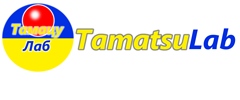Thread and Cloth
Cloth is made by weaving warp and weft threads. Even if either the warp or the weft is lost or cut, the fabric will not work. Both warp and weft are important components of fabric.
Both vertical and horizontal connections are necessary for an organization to function effectively. A vertically divided organization with only hierarchical relationships does not work well. On the other hand, an organization with only horizontal connections and no leader or chain of command will not work well either.
The warp and weft threads functioning separately does not make a cloth. It is only when the warp and weft threads are tightly combined that the fabric functions. The warp and weft threads support each other, making the fabric stronger. By weaving the warp and weft, it can be received on the surface.
A strong weave has tightly interwoven warp and weft threads. Strong coordination between the chain of command and horizontal connections creates a strong organization. An organization with strong vertical and horizontal coordination can achieve things that cannot be achieved by a vertical or horizontal organization.
In creating and cultivating an organization, it is important to check and improve the warp and weft so that they are tightly linked.
Organization is a word that originally came from weaving cloth by braiding threads. By weaving threads into cloth, it becomes possible to do things that could not be done with a single thread. Similarly, by creating an organization, humans will be able to do what they could not do alone. By turning threads into cloth, the range of functions and activities is greatly expanded.
The flow of people, goods, and money should be considered when creating an organization. Where do people come from and where are they going? how do things move? And what are the rules for cash flow? It is essential to understand the flow of people, goods, and money, and to ensure that it flows smoothly, in order to create a good organization. People, things, and money are important elements that move an organization.
A place and its atmosphere greatly influence the psychology of the people there. In order for an organization to function effectively and actively, it is necessary to devise the place and atmosphere. If your organization doesn't work well and your business doesn't do well, maybe it's the location and atmosphere. Managers need to pay close attention to the location and atmosphere in order to effectively move the organization.
An organization is a collection of people. There is a reason why people gather. As more and more people leave, the organization that has been created will collapse. In order to maintain, stabilize, and develop an organization, we must devise ways to attract people to the organization. In order to develop an organization, it is important to create reasons for people to gather in that organization.
In order for an organization to develop, it is important for people to compete in that organization and help each other at the same time. If you don't compete, you will lose your goals and motivation, and people will drift away. However, if there is only competition, people will start to drag each other down, and the atmosphere in the organization will deteriorate. In order to organize well, we need not only competition but also mutual help. Competition and mutual aid are two important factors for activating and developing an organization.
Purpose, dreams, and goals are essential to the development of an organization. What is the organization for, what do you want to be in the future, and what goals do you have? If there is a clear direction for the future as an organization, the energy to go there will come out. It is similar to the purpose, dream, and goal of an individual. However, the objectives, dreams, and goals of an organization have characteristics that differ from those of individuals.
Organizations often have lofty ideals and goals when they are first established, and the people who gather are often full of energy. However, when the operation actually started, various troubles were encountered, or it did not function as expected, and the philosophy and goals were gradually lost. If an organization loses sight of its ideals and goals, its functions will gradually deteriorate, and the hearts of the people in the organization will also become dirty. In order to maintain a healthy and vibrant organization at all times, it is important to give the organization itself a self-cleansing function.
An organization is a collection of people. People change organizations, and organizations change people. People feel happy and frustrated in an organization. Some organizations make many people happy, while others do not. Some organizations make people unhappy, some don't. Even in organizations that work in the same way for the same purpose, the psychological state of people within the organization varies greatly.
When people gather together, problems are more likely to occur. The nuisance of someone within the organization may offend other members or people outside the organization. In order to prevent troubles and nuisances, or to clarify how to deal with troubles, it is necessary to establish rules and manners. Setting and reviewing rules and manners is essential for the sound operation of an organization.
In some cases the tissue develops well, in others it does not. Tissues that have developed well to a certain scale may suddenly stop developing. It may be because there is some obstacle that the organization does not develop. Obstacles that stop tissue development can be internal or external to the tissue.
Organizations sometimes collapse due to external pressure or due to civil turmoil. Any organization that is created will eventually collapse. In order for the organization not to collapse, the organization itself must continue to change. Organizations that cannot change are prone to collapse. Organizations can maintain and develop as a whole by continuing metabolism while partially collapsing.


